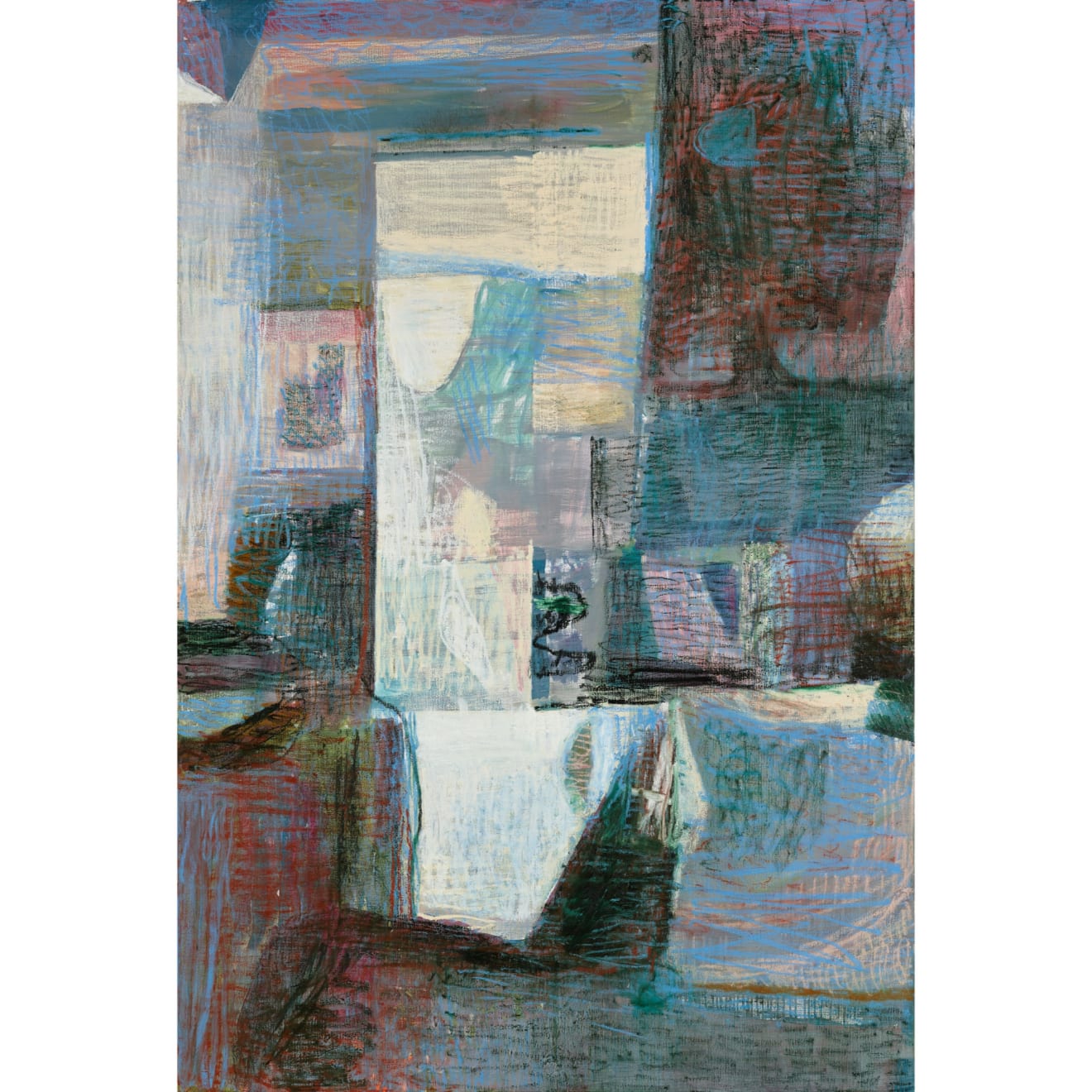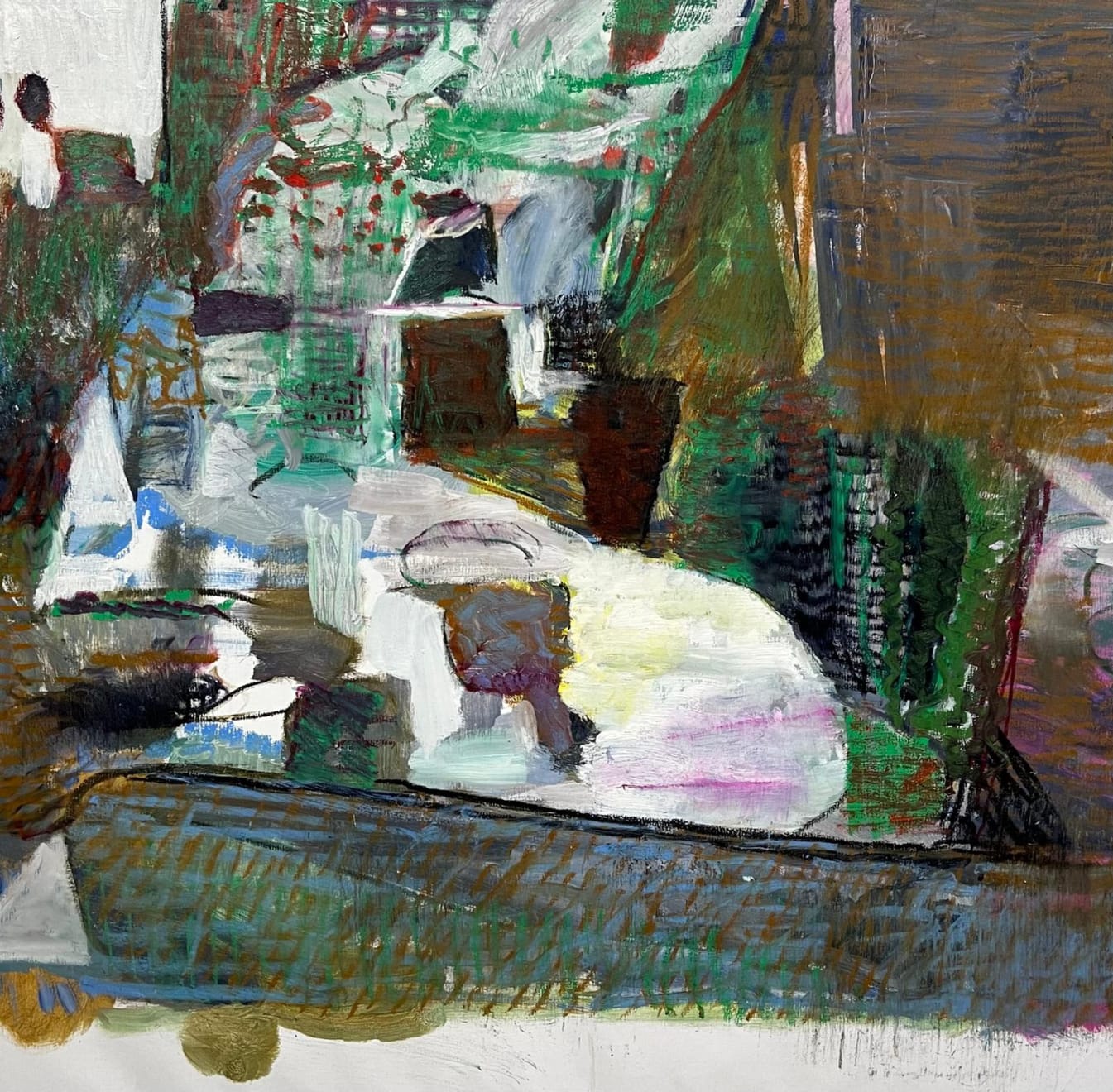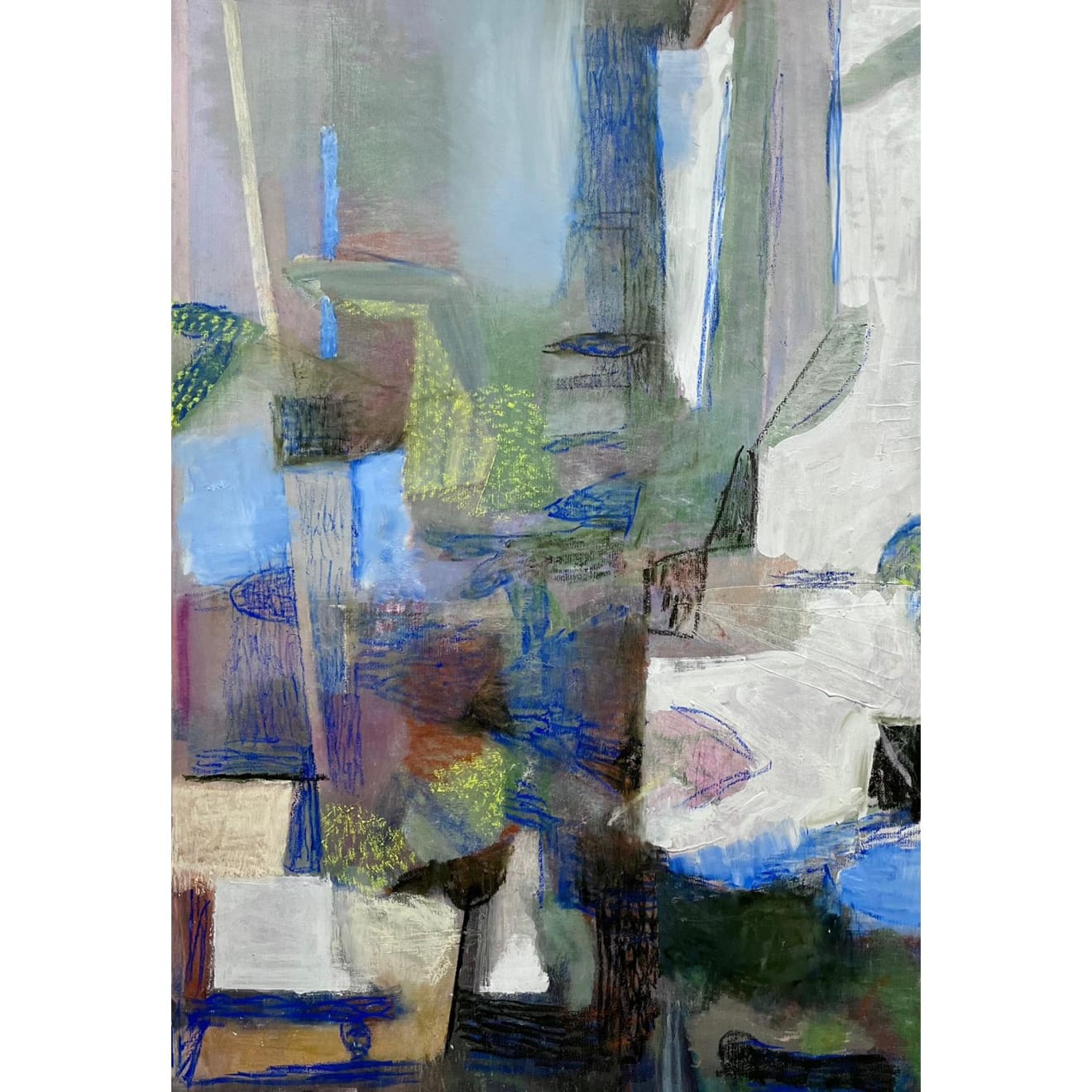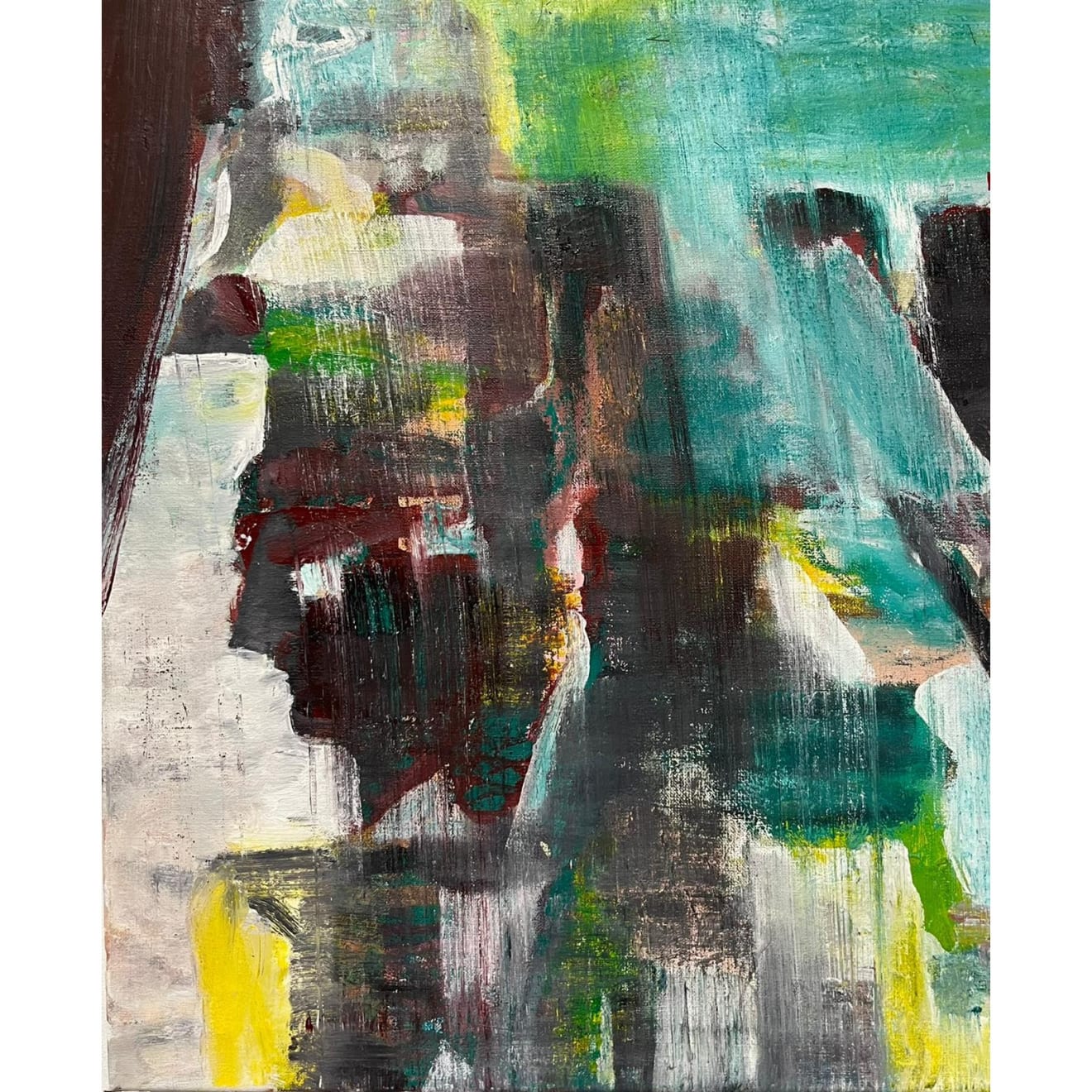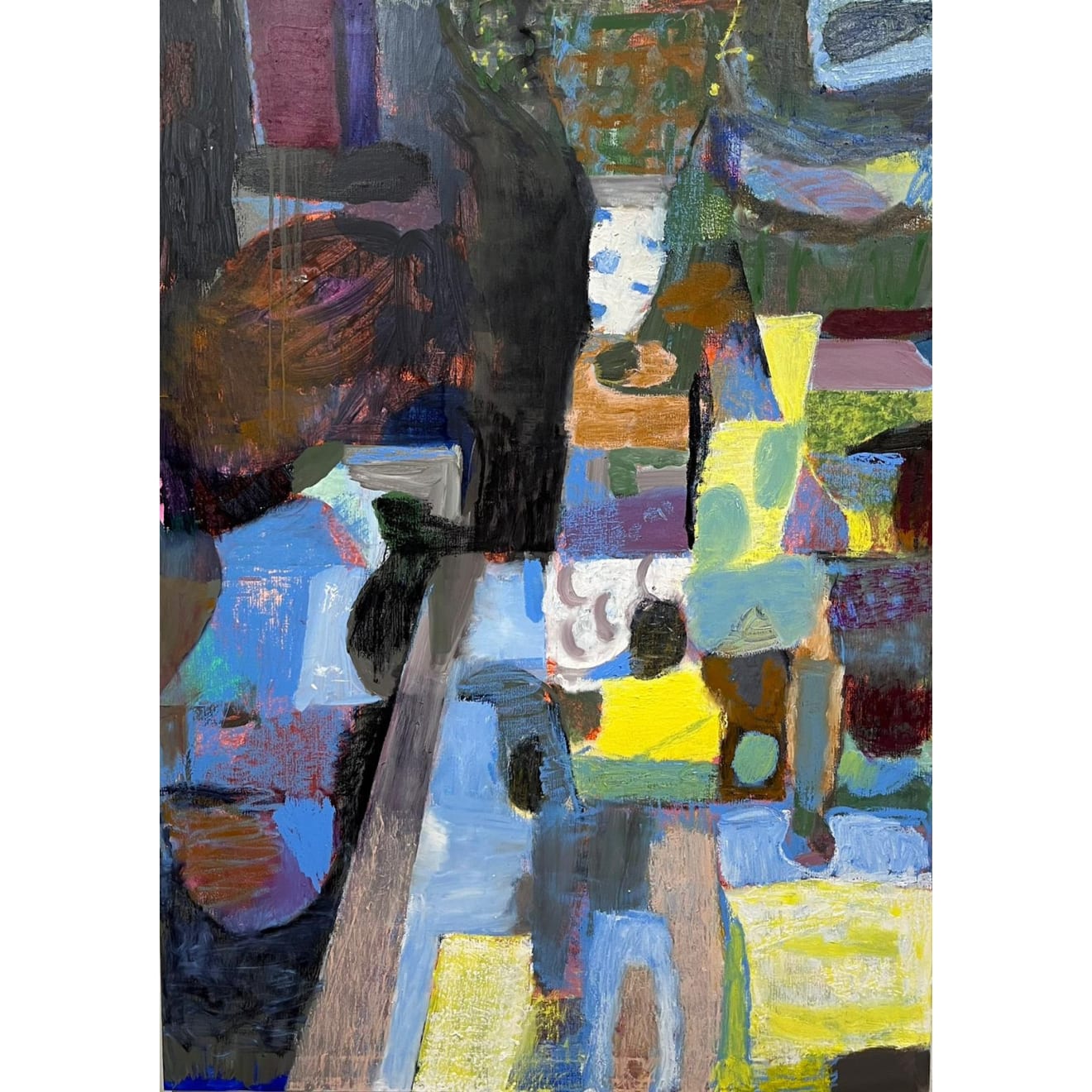Laura Vahlberg recently sat down with Piet Raemdonck to discuss his current solo exhibition at Otomys, entitled Bij Daglicht. The two Otomys artists share a passion for light and space. Both their practices explore landscapes, still lives and interiors, capturing the beauty of otherwise prosaic settings. This discussion is an exciting exchange between two artists from opposite corners of the globe, united by investigations in painting and collage.
Laura Vahlberg: Hi Piet, thank you so much for agreeing to this interview! First, can you talk a little bit about your artistic influences?
Piet Raemdonck: Where in previous years the work of Tal R was unavoidable to me as an inspiration, I feel like lately my inspirations are so many! When I look at my ’saved art’ on Instagram (you’re in there Laura ;)) I really try to look diagonally and not stick to one particular image. So I look diagonally and say to myself : this is me! :)…and I really believe it.
Lately...I must say that I’ve been impressed by the work of Morteza Khakshoor (@mortkhakshoor), and I’m also referring to his older drawings there! The artist I exchange artistic ideas with most is my super gifted friend Florian Tomballe (@floriantomballe). I’ve enjoyed discussing our painterly practices with the great Terry Ekasala (@terry_ekasala). Check them out! They're great.
Laura Vahlberg: What was your journey like in becoming an artist? How did you get started?
Piet Raemdonck: I think I need to go back in time to when I was a very young child. I've always been into painting and drawing and crafting things. At age seven I started attending an art school on Saturdays-- this was the world of art opening its doors. I went there until I was eighteen and then I moved to Antwerp to do my master in visual arts.
Shortly after I got my masters I noticed I could make money painting commissions. In my early twenties I did lots of murals and painted portraits and I started working with art dealers /interior designers (Axel Vervoordt the most renowned for certain) who would place my work with clients. I also made illustrations for a magazine.
I traveled a lot in those years, and painted during these travels. Slowly I built an audience for the work I made independent from commissions. Now and then I worked with galleries in Belgium, the Netherlands, Germany, and France. I tried to stay very independent because I wanted my art to mature and develop freely.
When I was 33 I opened my own exhibition space in Antwerp. At that point I focused entirely on my personal artistic practice. I left this space behind after eleven years and that's when I moved house and studio out of the city and back to the countryside where I grew up.
Laura Vahlberg: What is a typical day in the studio like for you?
Piet Raemdonck: I have a tendency to paint during daylight hours..then again..I lately had some very inspired night sessions in the studio with a great flow.
I'm both the painter who can obtain a result very quickly (say in a few hours) and the painter who would continue working over a very long period of time on a canvas (we're talking weeks, months and years in those cases). Entire paintings can get hidden underneath the final paintings in those cases. I strongly believe both trajectories are valuable. I enjoy making a little meal in between painting sessions and feeling like the creation process just continues...but with other ingredients.
Laura Vahlberg: I read in a recent interview with Otomys that you sometimes make collages. I make collages as well. Can you talk a little bit about that and how it informs your painting practice?
Piet Raemdonck: I love making..and watching collage..
In my case they're mostly painted paper shapes that I glue together and paint over and then cut again and paint over. I love the fact that size and framing aren't decided upon in advance. I love the borders, visual jumps or visual collision you can get in making collages. I think there's something free and playful and anti uptight about collage. In the Otomys show that's coming up there are 3 paper collage works, and their large interpretation in oil on canvas. Here one of the collages featured in the show:
Laura Vahlberg: Your show at Otomys features paintings of interiors. How does your experience painting interiors compare with that of painting landscapes?
Piet Raemdonck: Great question.
There’s very much this IN as opposed to OUT of course. It’s rare to see a skyline in an interior, yet a landscape often has one. I do think the duality of in and out plays with a contrast between the dense and concentrated as opposed to the wide open. I think of the interior world as a haven, a nest, and also as a reflection of personalities.
I like to look at an interior as if it is a big still life. The renovations we've been doing in my studio house were greatly inspiring in terms of seeing the changing space and light. Many paintings came out of that..(Breekwerk and Klein Breekwerk, both in Australian collections now, are two of them).
I looked at my place as if it were a moving object, a mobile much like a Calder or Tinguely. They say about architecture that it is basically about opening and closing. Maybe we can say that about the painting too…that it is about revealing and hiding. Showing and not showing.
Laura Vahlberg: You mentioned that you make large paintings based off of some of your collage work. Do you find your process changes with the increase in scale and change in medium?
Piet Raemdonck: Lately working bigger comes more naturally to me. It's an energy thing for certain. I often think of Alex Katz and his bold choreographic painterly actions on huge scale, that also came out of small studies.
When I work with oil sticks I often work bigger, I do think the material guides me to do so.
It depends a bit on the subject matter though. When drawing or painting people I mostly work small focusing on an intimism. And I also love sitting in a field doing a tiny painting.
But an interior painting…I really like it when the canvas feels like a space you can walk right into.
And I like it when you can walk to and from a painting and see kind of a recognizable image transform into its abstract building blocks.
Laura Vahlberg: How do you know when a painting is complete? Do you have some specific goals in mind?
Piet Raemdonck: It's very rare that I dramatically decide on the spot that the work is finished. Normally I would sleep on it and then make final changes the next day. Then I contemplate for quite a while before deciding the painting is complete. I have a tendency to write a bit before, during and after painting. This might be just a few words that describe painterly goals or visions I want to work towards. For example, I would ask myself ' what is this image about?' and write a bit about that. When during painting I make an artistic discovery I really try and write something about what happened there as a means to anchor it. Often I find the titles for the paintings in my writing.
Laura Vahlberg: Where can readers see your work in person? You mentioned you have a show coming up with Otomys soon, right?
Piet Raemdonck: My show BIJ DAGLICHT is at Otomys in Melbourne in May 2023 and there will be one in London by autumn.
Instagram is an easy way to follow my work as well.
Bij Daglicht will be on display at Otomys Melbourne until 19 May 2023.
May 10, 2023
